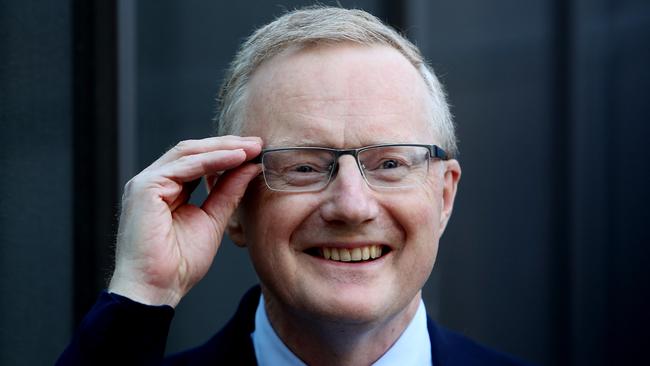Reserve Bank admits surprise at consumption slump
RBA boss Philip Lowe is confident of end to spending drought, but was ‘surprised’ by weak consumption growth.

Reserve Bank of Australia Governor Philip Lowe says he remains confident that consumers will throw off recent gloominess and begin to spend the income boost that has flowed from tax cuts and interest rate reductions.
Still, Dr Lowe added that data last week showing flat lining household consumption growth in the third quarter came as a “surprise” to the central bank.
“The evidence over time is that if Australians have extra income they spend a fair chunk of it,” he told a conference on the payments system.
“It is quite possible that in the current environment (of high household debt) the spending is taking a bit longer.”
More time is needed for the stimulus to flow through to the economy, and the soft third quarter growth report doesn’t contain “any particularly messages about the future,” Dr Lowe said.
READ MORE: RBA governor Philip Lowe waits in anticipation of growth | Retail sales stagnate in October as shoppers stay home
The comments follow the release of national accounts data last week showing the economy grew by 0.4 per cent on-quarter and by 1.7 per cent on-year, around its weakest pace in a decade.
“The GDP outcome was broadly in line or expectations…the surprise was the weakness in consumption growth,” Dr Lowe said.
“In the third quarter, households got a boost to income…the surprise was they decided to save a fair share of that but the evidence over time is that if Australians have extra income, they spend it.”
While consumer demand remained in a slump, household income grew solidly, and it was government spending and booming exports that gave the economy some support.
The RBA retains optimistic forecasts for GDP growth in 2020, with many economists now expecting the central bank will revise them down in February, with two more interest rate cuts widely anticipated through the year.
The central bank has cut rates three times since June, lowering the official cash rate to a record low of 0.75 per cent. At the same time the federal government has eased fiscal policy via an income tax credit in July, which will be worth almost $17bn in the year to June.
Australia’s economic growth rate increased to 1.7 per cent in the September quarter from 1.6 per cent in the June quarter but consumer spending rose just 1.2 per cent - the weakest since the global financial crisis – and the household savings rate rose from 2.7 per cent to 4.8 per cent – the highest in 2.5 years – showing rate cuts and government tax cuts have so far been saved rather than spent.
While remaining confident that the policy stimulus will increase economic activity, Dr Lowe pointed to his emphasis on the “long and variable lags in the transmission of monetary policy” in his statement after the December board meeting.
The Australian dollar was little changed at $US68.23 after Dr Lowe’s speech.
The market-implied chance of another rate cut at its February board meeting was 64 per cent.
With Dow Jones




To join the conversation, please log in. Don't have an account? Register
Join the conversation, you are commenting as Logout